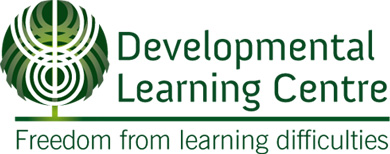In previous articles I have discussed some of the “equipment” your child needs to have in good working order for learning at school to be easeful and enjoyable. Vision and hearing, good fuel and hydration are obvious to most of us. However, many parents and teachers do not realise the importance of good balance to the process of thinking. In this blog, I will explain why good balance is key to successful learning and how to complete a simple test to understand if your child is experiencing balancing issues.
Why is balance so important to successful learning?
Balance is the ability of the individual to maintain equilibrium, to sit erect in an upright posture, to be able to stand on two feet without swaying, to be able to walk without falling over, and to be able to maintain an upright posture even in the dark.
The sense of balance develops in response to the pull of gravity. Gravity affects us all from the moment of conception until the end of life itself. Balance is, in fact, one the first of the senses to develop and is the foundation for many capacities we need to function well in life.
Good balance enables you and your child to concentrate, sit still and listen when required, to think clearly, to succeed at reading, spelling and mathematics and to develop skill in sporting activities.
How Do We Maintain Our Balance?
The sense of balance is controlled primarily by the vestibular system, located in the inner ear as part of the auditory (hearing/ listening) system. Simply put (this is a very complex system), movement of fluid inside three semi-circular canals in the inner ear sends signals to the brain to tell us where our heads are and whether or not we are upright. The vestibular system also sends messages to our muscles and joints to make adjustments to maintain our balance once achieved while sitting, standing or when moving.
How can I test my child’s balance?
Here are a couple of simple balance tests, which you can do playfully with your child if he is 6 years or more.
Balance Test 1:
1. Ask your child to stand with his feet together, arms down by his sides, looking straight ahead. Count to 10 and observe his balance. He should be completely steady.
2. Now ask him to close his eyes, keeping his feet together and count slowly to 10. What do you notice about his balance? If his sense of balance is good, then he should remain stable with no swaying or movement.
3. Next ask him to open his eyes, stand on one leg and count slowly to 15.
Repeat but this time with his eyes closed. Note any changes in his ability to maintain his balance.
4. Now ask him to stand with one foot immediately in front of the other, with the toes of his back foot touching the heel of his front foot, as if he was standing on a narrow ledge. Count slowly to 15. Then ask him to close his eyes, count again to 15 and observe his balance.
Balance Test 2:
1. Place about 3-4 metre piece of wool or string on the floor across the room. Anchor it at each end so that it is taut and straight.
2. Now ask him to walk barefoot, heel to toe, along the string while looking straight ahead (not looking down at his feet).
3. Then ask him to walk heel to toe backwards, while looking straight ahead. Heel to toe means there are no gaps in your steps. He must feel with his feet and place his feet end-to-end, heel-to-toes when walking forward, and toes-to-heel when walking backwards.
If your child’s balance system is mature and working well, he will remain steady throughout all these tests. He should be able to maintain his equilibrium without wobbling, waving his arms about or looking down at his feet.
However, your child may be one of the many people for whom these tasks are quite challenging. If he wobbled and waved his arms about to maintain his balance, put one foot down or simply had to peek at his feet, his balance is not as good as it should be. By the age of 6-7, children should be able to complete these tasks and remain steady.
Try it yourself first. You might be surprised at what you discover!
Is your child experiencing issues with balance?
This may be affecting his concentration. Call 0800 543 399 or Request a free call back with the Developmental Learning Centre to understand how your child could benefit from our natural and holistic therapies
